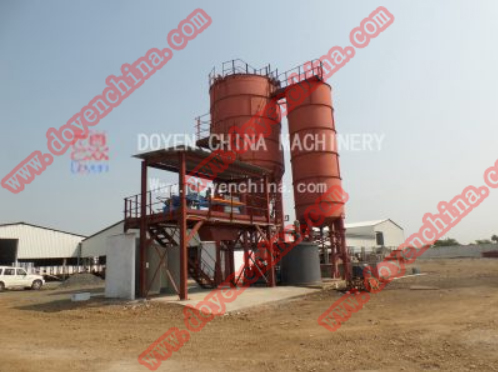

Tel:
+86-757-8633-0278
Email:doyen@doyenchina.com
Fax:+86-757-86287390
Address:Room 201, Building No. 24, Yicui Rose Garden, No. 2, Jihua 7 Road, Chancheng District, Foshan City, Guangdong Province, China 528000.
In the sewage treatment work, the danger is like a Pandora’s box, where it is placed all the time, waiting for the operator to open it carelessly, and harvest the life or health of the sewage treatment staff! Therefore, we must be aware of the dangers in sewage treatment in order to reduce the occurrence of accidents!
In the danger of sewage treatment, the danger in the sewage tank absolutely occupies an absolute position. More than 80% of accidents occur in the sewage tank or related operations. Therefore, the hazard identification of the sewage tank (including domestic and industrial sewage) is ours. What a dirty teacher must have! Especially in the summer season when accidents are high, I hope you can remember the lessons of the accident! You can live long if you know a lot!

1. Common toxic and hazardous substances in sewage tanks
1. Type of sewage tank
(1) Divided by location: indoor, semi-outdoor and open-air
(2) According to the setting of the sewage tank, it is divided into: the monomer setting above the ground, and the setting underground below the ground.
(3) According to the settings of the sewage cleaning device: automatic mechanical cleaning, semi-automatic mechanical auxiliary manual cleaning, and manual cleaning.
(4) According to the type of sewage: sewage from electroplating and circuit board manufacturing enterprises, sewage from leather and paper manufacturing enterprises, sewage from printing and dyeing enterprises, domestic sewage, septic tank sewage, etc.
2. Common poisonous substances in various types of sewage tanks
(1) Sewage from electroplating and circuit board manufacturers mainly includes heavy metal compounds such as chromium, cadmium, nickel, zinc, copper, gold and silver, cyanide (from the “gold salt” used for cyanide electroplating, Shanna, etc.), Arsenic (arsenic), containing corrosive acid and alkali substances (used for the sedimentation and neutralization of heavy metals in sewage)
(2) Wastewater from leather and papermaking enterprises, printing and dyeing, etc. mainly include heavy metals such as chromium, cadmium, barium and non-metallic compounds (leather tanning, dyes, etc.), hydrogen sulfide, methane, ammonia, carbon dioxide (from leather, paper, etc.) And natural fibers and other organic matter decayed, etc.), containing corrosive acid-base substances (used for the sedimentation and neutralization of heavy metals in sewage)
(3) Domestic sewage, septic tank sewage, etc. mainly include: hydrogen sulfide, methane, carbon dioxide, and ammonia (generated by decay of various organic matter, etc.)
In addition, in the sewage pond located underground, carbon dioxide is naturally deposited in the air at the bottom due to natural laws.
3, the main damage caused by the toxic substances in the sewage tank cleaning
(1) Poisoning caused by irritating and asphyxiating gases: hydrogen sulfide (irritating and asphyxiating), methane and carbon dioxide (simple asphyxiating), hydrogen cyanide (asphyxiating, produced by high concentration of cyanide in acid), ammonia Gas (irritating and corrosive), etc., which are the main cause of casualties of the sewage tank cleaning personnel.
(2) Poisoning caused by highly toxic substances: cyanide, arsenide (arsenic), etc., caused by mistaken entrance, eyes, and broken skin. This is the secondary cause of casualties of sewage tank cleaning personnel.
(3) Corrosion caused by acid and alkali: to eyes, skin, etc., this is the main cause of injury to the sewage tank cleaner.
(4) Allergic reactions caused by heavy metal compounds, dyes, etc.: By stimulating the skin and mucous membranes, some substances can enter the body through the damaged skin and cause further poisoning. This is the secondary cause of injuries to the sewage tank cleaners.
4, the characteristics of the main poisoning gas and the hazard factors of poisoning substances
(1) Hydrogen sulfide
is the main cause of acute poisoning safety production accidents in this industry. Hydrogen sulfide exists in the form of a colorless gas with the smell of rotten eggs at room temperature. It is soluble in water and can explode when the concentration in the air reaches 4.3% -45.5%. The gas is not only an irritating gas, but also a kind of asphyxiating gas with strong neurotoxicity. Low concentration (30-300mg/m3) can cause tearing, coughing, dizziness, headache, chest tightness, fatigue, nausea, vomiting and other symptoms after contact. Medium concentration (300-700mg/m3) can cause dizziness, headache, chest tightness, fatigue, nausea, vomiting and other prominent symptoms after exposure, and can cause limb dyskinesia, transient disturbance of consciousness, etc. At high concentrations (above 700mg/m3), it can directly act on the brain nerve center through the body’s chemoreceptors, causing respiratory paralysis or further cessation, abnormal heartbeat and further cessation, resulting in delirium, convulsions, rapid coma, etc. “Lightning-like” coma or death (above 1000mg/m3), at the same time. Accompanied by pulmonary edema. In addition, hydrogen sulfide also has a cytotoxic effect, producing symptoms similar to cyanide poisoning, and may also cause aggravation and death due to this cause after being sent to the hospital for treatment.
(2) Methane
is the main cause of acute poisoning safety production accidents in this industry. Methane exists in the form of a colorless and odorless gas at room temperature, which is lighter than air and can explode in the air. The gas is a simple asphyxiating gas and has anesthesia-like effect. When the air concentration reaches 25%-30%, short-term inhalation can cause dizziness, headache, chest tightness, fatigue, nausea, vomiting and other symptoms. In addition to dizziness, headache, chest tightness, fatigue, nausea, vomiting and other prominent symptoms after continued inhalation, it can cause limb dyskinesia and transient disturbance of consciousness. When a large amount of inhalation can directly act on the brain nerve center through the body’s chemoreceptors, it will cause respiratory paralysis or further stop and abnormal heartbeat and further stop, resulting in delirium, convulsions, rapid coma, etc., resulting in “lightning-like” coma or death.
Acute poisoning caused by sewage treatment tanks and construction pumped wells is not only caused by the above-mentioned two gases escaping from the sewage due to daily accumulation and agitation, but also due to the lack of oxygen caused by the above-mentioned gases.
(3) Carbon dioxide
is the secondary cause of acute poisoning accidents in the industry. Carbon dioxide exists as a colorless and odorless gas at room temperature. It is heavier than air and non-flammable and explosive. The gas is a simple suffocating gas with a content of 0.03% in natural air. It can excite the respiratory center when the concentration is low, and inhibit the respiratory center when the concentration is high. Acute poisoning is often accompanied by hypoxia. Therefore, the daily so-called carbon dioxide poisoning is not simple, but it is caused by hypoxia. Short-term inhalation of high concentrations can cause dizziness, headache, chest tightness, fatigue, nausea, vomiting and other symptoms. Continued inhalation can cause limb movement disorders, transient disturbances of consciousness, etc. When a large amount of inhalation can directly act on the brain nerve center through the body’s chemoreceptors, it will cause respiratory paralysis or further stop and abnormal heartbeat and further stop, resulting in delirium, convulsions, and rapid coma, etc., leading to death.
(4) Cyanide, hydrogen cyanide
is the secondary cause of acute poisoning accidents in the industry. Sodium cyanide (Kaanna) and potassium cyanide in cyanide are highly toxic substances; potassium ferrocyanide (yellow blood salt), iron ferrocyanide (Prussian blue), potassium ferricyanide (red blood salt) It has low toxicity, but it releases highly toxic hydrocyanic acid in the presence of acid; cyanide generally does not cause poisoning except for ingesting the eyes or damaging the skin. Hydrocyanic acid is a colorless, bitter almond-flavored liquid that emits highly toxic vapors. Hydrogen cyanide has a colorless, bitter almond-flavored gas at room temperature. All inorganic cyanide substances are a kind of suffocating substances such as strong blood poisons, a very small amount can cause dizziness, headache, chest tightness, fatigue, nausea, vomiting and other symptoms. Severe poisoning can cause immediate death. Inhalation of high-concentration hydrogen cyanide gas (300mg/kg) for a short period of time died immediately.
(5) Arsenide, arsine
is the secondary cause of acute poisoning accidents in the industry. Arsenic trioxide (arsenic) is a highly toxic substance, arsenic pentoxide, arsenic trisulfide (orpiment), arsenic disulfide (realgar) and other low toxicity, arsenic compounds release highly toxic arsenic when exposed to acid hydrogen. The highly toxic arsenic generally does not cause poisoning except for inadvertently ingested eyes or damaged skin. Arsenic hydrogen exists in the form of a colorless, garlic-smelling gas at room temperature. Arsenic is a kind of strong hemolytic poison, which mainly causes kidney damage, and also damages the heart, liver, and skin. Inhalation of a small amount of arsine can cause dizziness, headache, chest tightness, fatigue, nausea, vomiting and other symptoms. Severe poisoning can cause immediate death. Inhalation of high-concentration arsine gas (250ppm) for a short period of time immediately died, and inhalation of 25-50 ppm for 30 minutes also caused death.
(6) Ammonia
is the secondary cause of acute poisoning accidents in the industry. Ammonia exists in the form of colorless, smelly urine, and irritating gas at room temperature. It mainly causes upper respiratory tract irritation and corrosion. It severely leads to chemical pneumonia, pulmonary edema, and even acute pulmonary hemorrhage, pneumothorax, emphysema, etc., which are harmful to the eyes. , The skin also has burn damage. Inhalation of a small amount of ammonia gas (above 100mg/m3) can cause upper respiratory tract irritation, such as coughing, watery tears, chest tightness, fatigue, nausea, vomiting, throat edema, difficulty breathing, etc., severe (1750-4500mg/m3) Immediately produce chemical pneumonia, pulmonary edema, and can lead to death.
The above content is to introduce you to the damage caused by the poisoned substances in the sewage tank, and you must pay attention to protective measures when cleaning the sewage tank.

Doyen specializes in providing belt press equipment for the Southeast Asian market. Welcome to visit our workshop and formulate a more scientific plan based on the actual situation of your company. Welcome to visit joyce@doyenchina.com or visit https://www.doyenchina.com.
Mar-03-2021
admin

 +86-757-8633-0278
+86-757-8633-0278 doyen@doyenchina.com
doyen@doyenchina.com Sitemap
Sitemap